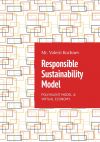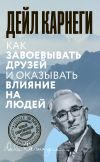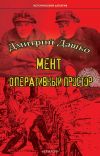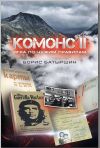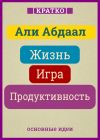Текст книги "Английский для экономистов (учебник английского языка)"

Автор книги: Денис Шевчук
Жанр: Иностранные языки, Наука и Образование
сообщить о неприемлемом содержимом
Текущая страница: 2 (всего у книги 19 страниц) [доступный отрывок для чтения: 5 страниц]
The other major branch of economics is microeconomics. Microeconomics is the study of behavior of individual units within the economy. The division of economics has resulted from the growing complexity and sophistication of economic research.
These two approaches and the topics they include are in fact interdependent. Individuals and firms make their decisions in the context of the economic environment, which has an impact on the constraints the decision makers face as well as their expectations about the future. At the same time, when taken as a whole, their decisions determine the condition of the overall economy. A good understanding of economic events and an ability to forecast them require knowledge of both individual decision making and the way in which individuals react to changes in the economic environment.
1.Economies are becoming more complex every year. Why?
2.What is the main division of economics?
3.What is macroeconomics «responsible for»?
4.What does microeconomics deal with?
TEXT 5
1.In what context can we use the word environment?
2.What elements of the environment can you mention?
3.Which ones are of the most importance?
Read the text. Be ready to define the key-sentence(s) of each paragraph. Explain your choice.
Read
MACRO ENVIRONMENT
Macro environment is the network of systems composed of culture, political and economic forces, technology, skill mixes, and consumer groups; a source of opportunities and constraints for the organization. Once the organization has built its product or defined its service, it must distribute it to consumer client groups who have wants and needs that they attempt to satisfy through the consumption of such products and services.
Every organization exists within an extensive and complex environmental network. Organizational environment refers to all groups, norms, and conditions with which an organization must deal. It includes such things as the political, cultural, economic, religious, educational, and like systems that affect an organization and which in turn affected by it. Table 1 provides a summary of environmental subcomponents.
Table 1.

Culture, composed of values, norms, artifacts, and accepted behavior patterns, affects the way the organization is formed and how it operates once in existence. Indeed, one must recognize that all of the decisions made in an organization are culture bound; i.e., they are a reflection of all these components of culture. Societal norms are those standards that mold behavior, attitudes, and values of those members who constitute a society. They come from laws, customs, religious teachings, and common practice. They are standards because members take them into account in their decisions and behavior. Dress, speech, what is considered to be in good taste, and the general understanding of what is right and wrong are all affected by societal norms. At the same time, almost every institution in a society is capable of transfusing some of its values, norms, and behavior patterns into its environment. Organizations can hardly afford to ignore such a vital ingredient in its macro environment.
Political forces are classified as the form and role of government in a society. The source of law and other regulations that restrict or at least affect the organization, the political system also is the source of a rich variety of services for the organization. These services range from fire and police protection to the provision of recreational areas. When one thinks of the governmental sector, one might be likely to think of its negative connotation and red tape. Although there is an element of restriction originating from the political sector, it is by no means dominant. Even though the presence of the political system has served to complicate management’s job, it has also made it easier at the same time. By knowing that all similar organizations must observe the same rules and regulations, managers can experience an element of certainty in their activity. They know that they have a source of protection and redress when violations do occur.
The political system is coupled with the economic system. The type of economy a society has can range from private enterprise to planned economy. Whatever its form, the economic system is concerned with the allocation of scarce resources and the provision of some form of distribution. It is, in practice, quite difficult to separate the political and economic systems from each other.
The macro environment is also the source oftechnology – the machines, techniques, and methods required for production and distribution. To be able to compete successfully, organizations must have access to modern technology. It is simply not feasible for an organization to compete unless an adequate level of technology is available to it. It can be safely stated that organization success is measured by the ability of the organization to adjust to and to employ technological innovations. Among their responsibilities, managers today must count the obligation to maintain a spirit of creativity and ingenuity among members so that continued progress on the technological front can be made. The ever-growing shortages of resources of all types are but one indication of the seriousness of this obligation.
Skill mix in the labor force is likewise an important facet of an organization’s macro environment. All organizations depend to some extent on a supply of labor that possesses the skill and ability to perform the work necessary to attain objectives. Consequently, labor market conditions and skill mixes are crucial to success.
The consumers are the ultimate arbiters of the organization’s success, for it is they who make the critical choices to consume or not to consume an organization’s output. Without the income (in whatever form) that results from this consumption, the organization is doomed to a relatively short life. This means that managers must be more aware of and sensitive to the total environmental complex of their organization in order to develop and implement plans for successfully coping with it. Otherwise, there is little chance for success, for по longer willyesterday’s methods based on a placid environment serve in today’s turbulent outside world.
1.What is macro environment?
2.Why is macro environment a source of constraints and opportunities for an organization?
3.What is «the most influential element» of the environment?
4.What element can people influence?
TEXT 6
Read the following text. Define its main topic. Divide the text into logical parts. Give the title to the text and to each part. Explain the meanings of the words and phrases which have been highlighted.
The study of economics would be incomplete without an understanding of the nation’s role in the world economy. The study of the world economy is known as “international economics”. International economics embraces two broad areas of interest: international trade and international finance. World trade has been gaining increasing significance among nations. Why do nations trade? The answer is that nations have different quantities and qualities of economic resources and different ways of combining them. As a result, each country can produce certain goods more efficiently, or at relatively lower costs, than others. This idea can be stated somewhat differently. Imagine a world consisting of only two countries, each producing the same goods. Under such circumstances, the alternative or opportunity cost to each country of producing more of one good is the amount of the second good that must be sacrificed. In view of this, which of the two goods should the countries produce? The answer is that each should specialize. When two parties engage, the sacrifice that each makes to obtain something from the other is called the “terms of trade”. For example, in order to buy a book, you might have had to give up five visits to the movies. Your terms of trade, therefore, are 5 movies = 1 book. The terms of trade for a given transaction equal the number of units of goods that must be given up for one unit of goods received by each party to the transaction. Or in other words, terms of trade are defined as the ratio of the prices of its export commodity to the price of its import commodity. Despite the fact that trade is of great importance for each nation, all countries impose restrictions of one form or another to protect some of their domestic industries. The restrictions may be of several types: tariffs, import quotas, nontariff barriers. Tariffs are customs duties or taxes imposed by a government on the importation of a good. Tariffs may be (1) specific, in the form of a tax per unit of the commodity, or (2) ad valorem, based on the value of the commodity. Import quotas are laws that limit the number of units of a commodity that may be imported during a specified period. Nontariff barriers are any laws or regulations, other than tariffs, that nations impose in order to restrict imports. For instance, to “protect the health and safety” of their citizens, many countries establish higher standards of quality for various kinds of imported goods than for similar goods produced domestically.
Ex. 13. Insert the missing words given below.
Consumption, take account of, manager, state, environment, include, capital, macroeconomics, economy
In a simplistic … in which individuals or families produce primarily for their own …, economy-wide phenomena are of little importance. On the other hand, the complex financial … and production process that characterizes an advanced economy in the 1980s requires individual decision makers … both the current economic environment and forecasts of the economic environment. Decisions that require an understanding of the overall functioning of the economy … business decisions such as whether firm should sell bonds or stock to raise new … and individual decisions such as whether to change jobs or purchase a new home. Whether a person «wears the hat» of an entrepreneur, a business …, or a head of a household, it is important to be aware of the … of the economy as a whole. Specific factors that determine the advisability of these and other decisions are studied as part of … .
Ex. 14. Add an appropriate preposition to each of the following sentences where indicated.
1. This refers … the interactive effect of the parts of the system working together.
2. They decorated the house regardless … cost.
3. Economic forms range … the mixed private enterprise … completely controlled economies.
4. Everyone, irrespective …means or occupation, shall have an equal opportunity.
5. This function is basically performed … the price mechanism.
6. This simply means that demand … and supply … goods and services interact.
7. Gradual change is preferable …sudden, large-scale change.
8. Such a system affects … every link in the distribution chain.
9. They have to satisfy their wants and needs … the consumption of such products and services.
10. It has also made it easier …the same time.
11. The political system is coupled … the economic system.
12. Organization must have access .. modern technology.
13. All organizations depend … supply of labour force.
14. The economic system is concerned … the allocation of scarce resources.
15. We must try to cope … our problems.
16. The entrance door gives access … the living room.
Ex. 15. Open the brackets.
The Price System
Who (to tell) workers where (to work) or what occupation to choose? Who (to declare) haw many cars should (to produce) and how many homes should (to built)? Who (to specify) the predominant style of women’s dresses or men’s suits?
The greater the degree of competition the more these matters (to decide) impersonally and automatically by the price system or the market system. This may ( to view) as a system of rewards and penalties. Rewards (to include) profits for firms and people who (to succeed). Penalties (to include) losses, or probably bankruptcy, for those who (to fail). The price system (to be) fundamental to the traditional concept of market economy.
The price system basically (to operate) on the principle that everything that (to exchange) – every good, every service, and every resource – (to have ) its price. In a free market with many buyers and sellers, the prices of these things (to reflect) the quantities that sellers (to make) available and the quantities that buyers (to wish) (to purchase).
Thus, if buyers (to want) (to purchase) more of a certain good than suppliers (to have) available, its price (to rise). This (to encourage) suppliers (to produce) and (to sell) more of it. On the other hand, if buyers (to want) (to purchase) less of a certain good than suppliers (to prepare) (to sell), its price (to fall). This (to encourage) buyers (to purchase) more of it.
This interaction between sellers and buyers in a competitive market, and the resulting changes in prices, (to be) what most people (to refer) to by the familiar phrase “supply and demand”.
1.Read the text once again and answer the following question: “What role does the price system play in the market economy?”
Ex. 16. Study the following words and word combinations. They are used when you are to describe different trends of economic development. Consult a good dictionary and put down all their derivatives. Make your own sentences using these words. You can do it in the form of a question to your partner.
increase, raise, put up, step up, extend, expand, rise, grow, soar, boom;
decrease, drop, put down, cut, reduce, fall, go down, decline, collapse, slump; remain stable, hold, maintain, stay constant.
to stand at
to reach a peak of
dramatic(ally)
rapid(ly)
quick(ly)
vast(ly)
huge(ly)
enormous(ly)
substantial(ly)
considerable(ly)
significant(ly)
moderate(ly)
gradual(ly)
slight(ly)
a little
slow(ly)
Ex. 17. A picture is worth 1000 words. Economists, being efficient, like to present ideas in graphs, which are a type of picture. But graph is worth 1000 words only if a person looking at it knows the graphical language (graphish). Study the following information to be able to read any graph. Find the Russian equivalents for the highlighted words.
Graphs are used in two ways: 1. to present an economic model or theory which focus on hypothetical relationships; 2. to present real-world data visually. Actually, these two ways of using graphs are related. They are both ways of presenting visually the relationship between two things.
Graphs are built around a number line, or axis (axes, pl). Axes are called vertical and horizontal. We can plot the information on two axes. When we connect two points we have a line. Even if the line is straight, economists call any such line drawn on a graph a curve. A curve can bea linear curve, a downward-sloping curve, an upward-sloping curve, a nonlinear curve.
Economists use the following graphs in presenting actual economic data:
Line graph Bar graph
Flow chart Pie chart
Ex. 18. Give the English equivalents to the following.
Приобретает все возрастающее значение; альтернативные издержки; при таких условиях; который должен быть принесен в жертву; постарается быть самодостаточным; тарифы; квоты на импорт; условия торговли; нетарифные барьеры; навязывать ограничения; защитить отечественную промышленность; таможенные пошлины; налог на единицу товара; в определенный период; установить более высокий стандарт качества на товары.
Ex. 19. Translate the following sentences into English.
1.Это следует рассматривать с точки зрения действия всей системы. 2.Одна из ее функций – эффективное размещение ресурсов. 3.Рыночная цена – результат взаимодействия спроса и предложения на товары и услуги. 4.Экономика не может существовать без системы распределения. 5.Все решения – это отражение всех компонентов культуры. 6.Когда мы говорим о государственном секторе, мы подразумеваем бюрократический аппарат. 7. Если происходит нарушение закона, они знают, что у них есть защита. 8.Чтобы успешно конкурировать, организация должна иметь доступ к современным технологиям. 9.Все организации зависят от предложения рабочей силы. 10.Руководитель должно четко реагировать на все изменения в деловой среде. 11.В конечном итоге, успех организации определяют потребители.
Ex. 20. Let’s review the core concepts of economics. Translate the following into Russian.
1. Economics is the study of how people, individually and collectively, allocate their limited resources to try to satisfy their unlimited wants.
2. Scarcity occurs because human wants exceed the production possible with our limited time and resources.
3. A good is any item or service that satisfies a human want and, in so doing, adds to human happiness.
4. Production entails using technology to apply energy to materials in ways that make the materials more valuable, or that otherwise help satisfy human wants.
5. Labour resources are the physical and mental talents that people can make available for production.
6. Opportunitycost is the value of the best alternative surrendered when a choice is made.
7. Absolute prices are prices in terms of some monetary unit.
8. Relative prices are the prices of goods or resources in terms of each other, and are computed by dividing their absolute prices by one another.
9. Economic efficiency is achieved when we produce the combination of outputs with the highest attainable total value, given our limited resources.
10. Inputs are resources used in the production process, such as labour and raw or semifinished materials.
11. Outputs are transformed materials; the results of production.
12. Demand is the quantity of a specific good that people are willing and able to
buy during a specific period, given the choices available.
13. Supply refers to the quantity of a specific good that sellers will provide under alternative conditions during a given period.
14. Market equilibrium occurs at the price-quantity combination where the quantities demanded and supplied are equal.
15. Asurplus is the excess of the quantity supplied over quantity demanded when the price is above equilibrium.
16. Gross Domestic Product (GDP) is the total market value of goods and services produced within a country during some period, usually one year.
17. Gross National Product (GNP) is the value of all output produced by resources owned by the citizens of a country.
18. Economic growth is a positive quantitative change in an economic system; occurs when a society acquires greater productive capacity that can be used for consumption or investment.
19. Capital is all physical improvements made to natural resources that facilitate production, including buildings and all machinery and equipment.
20. Wealth is the value of the assets owned by an individual or a group of individuals.
SPEAK AND WRITE
1.Why is it important to view organizations open systems interacting with their environment?
2. Do you know any closed systems? Give some examples.
3. Give your own examples of the environmental influence on a business / on an individual.
4. Prepare a short report on the biography of a famous economist.
5.What would happen to standards of living in your country if all foreign trade were prohibited? How significant do you think this would be? In what areas would this impact be the strongest?
6.Does everything have a price? Are there some things you would not do regardless of price? Remember: prices and money are not synonyms; prices may be nonmonetary.
7. Summarize the information of the Unit to be ready to speak on Economics. The first step to be done is to write the plan of your future report.
8. Choose any question (problem, topic) relating to Economics and prepare a 5-7 minute report. Refer to different additional sources to make your report instructive, interesting and informative.
UNIT 2
BUSINESS ORGANIZATION
The world is a chain, one links another.
Your vocabulary
Business
– work relating to the production, buying, and selling of goods and services;
– an organization which produces and sells goods, or which provides a service;
– important matters that you have to discuss or deal with.
Businessman, Businesswoman – a person engaged in trade or commerce.
Business cycle
– process by which investment, output, and employment in an economy tend to fluctuate up and down in a regular pattern causing boom and depression, with recession and recovery as intermediate stages.
Organization
– a large group of people that has particular aims.
Organizer
– the person who makes all the arrangements for something and makes sure that happens as planned.
Ex. 1. Study the following words and word combinations and translate the sentences given below into Russian. Consult a good dictionary if necessary.
mean business, none of one’s business, go out of business, businesslike, be busy with, have no business to do, be in business, like nobody’s business, mind one’s own business
1. Mother has busied herself with our affairs for too long.
2. When traveling on business I take my tiny travel kit.
3. Let’s get down to business.
4. She had no business to publish his letters to her.
5. 50% of these stores were not in business five years ago.
6. They are working away like nobody’s business.
7. Umbrella sellers went out of business.
8. Stop teaching me! It’s none of your business.
9. Listen to me! I mean business!
10. The visit to Copenhagen was brisk and businesslike.
Ex 2. The words given below are the synonyms to the word organization. In what do they differ? Give your own definition to each of them.
Institution, council, body, entity, fund, trust, party, club, society, association, league, federation, union.
Ex. 3. Match thewords listed below with the dictionary definitions which follow.
accountability, effort, pattern, requirement, accomplish, existence, consumer, foster, affect, establish, benefit, involve
1. Create or set it up in a way that is intended to be permanent.
2. Help its development or growth by encouraging people to do or think about it.
3. Something that you must do or possess in order to be allowed to do some other thing.
4. The state of being real, alive, or actual.
5. Energy in the form of thought, action, time, or money that people use in their work.
6. It influences someone or something or causes them to change in some way.
7. Succeed in doing or finishing something.
8. Being responsible for and prepared to justify one’s actions.
9. A good result of something.
10. A person who buys things or uses services.
11. A particular, recognizable way in which something is done or organized.
12. To include somebody or something as a necessary part or use them in some way.
Ex. 4. Make the following words negative. Use prefixes -un, -in, -mis, -dis, -ir, and so forth.
Human, existence, enable, realized, regard, responsible, careful, systematic, effective, mature, aware, understand, loyal, formal, direct, continuous.
Ex. 5. Give the opposites to the following words. Use each of them in your own sentence.
Flexible, voluntary, to share, to adhere to, enjoy, confidential, consensus, versus.
Ex. 6. Be sure you know the meaning of the words given below. Give their derivatives.
Existence, accomplishment, benefit, authority, obligation, responsibility, extend, consider, favour, perception, value, equal, assume, conscious.
Ex. 7. Give the synonyms to the following words. Make up your own sentences to show the shades in their meaning.
To handle, to accomplish, goal, benefit, coerce, to achieve, to purchase, output, affect, to establish, to enhance, power.
Ex. 8. Translate into Russian. Pay attention to the economic and business terms.
1. Business is the production, buying, and selling of goods and services.
2. A business, company, or firm is an organization that sells goods or services.
3. A business is also may be referred to as an enterprise to emphasize its adventurous, risk-taking qualities, and business in general may be referred to as free enterprise and private enterprise.
4. Large companies are referred to as corporations, especially in the US.
5. Large companies operating in many countries are multinationals.
6. An entrepreneur is usually someone who builds up a company from nothing: a start-up company.
7. The people legally responsible for a company are its board or board of directors.
8. When a private company is bought by the state and brought into the public sector, it is nationalized.
9. When the state returns a company to the private sector in a sell-off, it is privatized.
10. A holding or holding company is one that holds stakes in one or more subsidiaries.
11. A holding company’s relationship to its subsidiaries is that of parent company.
What words and word combinations from ex. 8. do you consider to be economic and business terms? Explain what they mean.
Ex. 9. Translate the following text in written form.
The Interdependence of Society and Organizations
Modern societies have been called organizational. Unlike so-called prim–itive societies, modern ones produce most of their goods and services through special-purpose organizations that are, in the main, neither famil–ial nor tribal. Some of the organizations of a modern society are meant to earn a profit and some are «not-for-profit».
The organizational mode of conducting society's affairs means that virtually everyone in modern societies depends mightily upon how well organizations function. We look to them for goods and services of ade–quate quantity, quality, and a low enough price. We look to them for jobs to earn the money to buy what we need. We depend upon them for decent and healthful environments on and off the job.
In turn, organizations depend upon the contributed talent and effort of people who work in them. Every organization must obtain these con–tributions and other resources and convert them into some outputs that yield sufficient rewards to keep the organization alive and functioning. In a word, the relationship of society and organizations is one of interdependence. But what kind of interdependence?
Managerialism ( the ideological principle on which the economic, social and political order of advanced industrialized societies is actually based) proclaims that the society is made up of organizations, corporations, associations, and so forth – not individuals. Social decisions are a consequence of the interactions of the managers of the social units – not the will of the people, the demands of consumers, or the needs of workers.
1. Do you share the point of view of the author of the text?
LET’S READ AND TALK
1. Why do people try to «organize» themselves?
2. What formal and informal organizations do you know?
3. “Informal groups develop in order to meet a variety of individual needs which are not met by the formal organization.” Do you share this opinion?
TEXT 1
Read the text. Define the main idea of each paragraph. What are the key sentence(s) of each paragraph?
ORGANIZATION
Early in human existence people learned that their individual efforts often fell short of success. They found that they were unable to accomplish many tasks that require more than individual effort. The result was that only limited goals could be attained. Therefore the necessity of group activity was discovered relatively early in human existence.
Group activity could be aimed at some higher, more complex set of goals and could thus bring greater benefits to all concerned. This quality of group activity must be counted as one of the chief requirements for success. Cooperation is a prime element of a group of people who want to achieve more than they can acting individually. A system of group relationships built upon and fostering cooperation, then, is basically the meaning of an organization.
This system of cooperation consists of several parts: the human element, the physical element, the work element, and the coordination element. All of these elements, taken collectively, can be thought of as an organization. Today, this system of cooperation is much more complex than it was in the first attempts at organization.
Thus, organization is an open, dynamic, purposeful social system of cooperation designed to enhance individual effort aimed at goal accomplishment; consists of the human element, the physical element, the work element, and the coordination element; transforms resources into outputs for users.
It is important to examine the various parts or components of organization theory in order to outline its broad scope. These components are:goals, work, power and authority, delegation, structure.
It was stated earlier that organizations were established to enable an individual to accomplish more in a group than he could as an individual. In other words, organizations are devices for pooling talent and ability into an effective whole that can accomplish some desired objective. Every organization is initially built to accomplish some goal. The goal or purpose is an unrealized state or condition that the members do not possess but which they deem desirable. It is imperative that organizational goals be clearly defined and communicated to all organization members who are to be affected by them. Goals are the starting point for the design and maintenance of the organization itself. At the same time, these goals must meet a need that society has defined as important. Thus, consumer needs play a crucial role in organization.
Once the goal of an organization is established, it is time for the members to decide on the type of work activity that will be necessary to accomplish these goals. Basically, any organization must perform two fundamental types of work: primary and secondary. The primary work (it also commonly referred to as line work) consists of production and distribution of goods and services that will satisfy consumer needs. The secondary work (it is often termed staff work) consists of all those activities that support and extend the operations of primary work. For example, in a manufacturing firm, the secondary work would include accounting, personnel and quality control.
No theory of organizations would be complete without a treatment of the roles that power and authority play in organizational activity. These two components of theory help explain the network of relationships that tie the other components of an organization together into some logical pattern.
